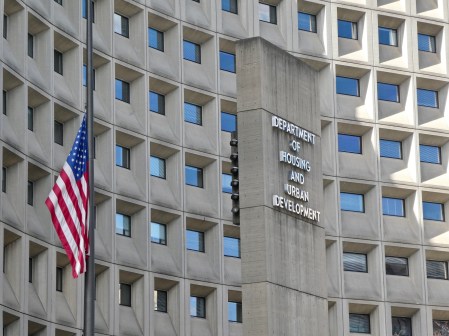
From virtual IT sandboxes to legacy systems hurtling through space, federal CIOs continue to confront the need to innovate while also supporting aging IT systems on which agency missions depend.
Few federal CIOs have quite the eclectic range of IT programs to support that Renee Wynn has as CIO at NASA. Speaking Tuesday at VMware’s Public Sector Innovation Summit — an event produced by FedScoop — Wynn joked that her agency is the only one in government that still must operate legacy systems, built more than a decade ago, on Mars and beyond.
At the same time, NASA is at the forefront of agencies working to cultivate new technology applications from a global community of scientists and engineering enthusiasts — such as ways 3-D printers might be used to produce medical supplies in space. NASA highlights many of those technologies on a website called NASA Spinoff.
But many federal CIOs struggle with modernizing their legacy systems — some of which still depend on applications that fewer and fewer know how to fix — and some can’t even get a full picture of all the legacy systems their agencies operate.
Among them is Richard McKinney, CIO at the Department of Transportation. “One of my principle efforts is to understand what’s on our network, how we’re wired, and where our assets lie,” he said. “One of the biggest frustrations for me is I don’t have an as-is blueprint,” McKinney said. Another challenge is prioritizing where to place tools that can identify all the data in motion moving across those assets, a key step in achieving greater network security.
Another CIO facing a similar challenge is Department of Agriculture CIO Jonathan Alboum. “We have 1,300 to 1,400 locations, and 7,500 component parts to our networks,” he said, describing USDA’s diversity of services, which range from issuing crop insurance and food stamps to putting out forest fires. Officials at USDA are meeting this week, he said, to discuss plans to establish a single departmentwide IT network, that would eventually replace 16 or more networks currently operated by the department’s various bureaus.
Another factor CIOs must contend with is the changing nature of agency networks.
“One of the old models in cyber was knowing where your edge was. We don’t really have an edge anymore,” said Wynn, explaining that the range of devices connecting onto the agency’s networks, from supercomputers to devices like Fitbits, has changed the nature of network operations.
Still another factor is the volume of data agencies like NASA handles, which in Wynn’s case, typically reaches 16 terabytes a day. “We have to think differently,” she said.
Nevertheless, CIOs are taking steps to spur innovative ideas.
McKinney noted that Transportation Department Chief Technology Officer Maria Roat had, in recent days, instituted a new innovation sandbox program, one on Amazon Web Services, and one on Microsoft’s Azure cloud platform, to allow DOT employees to virtually test and nurture new ideas. “We plan in the next few weeks to set up some challenges” to draw out new ideas to promote innovation at DOT, he said.
Tyrone Grandison, deputy chief data officer at the Department of Commerce, said his office is working on ways to “spur economic growth and increase in jobs by showing people how to take government data that already exists and put it to work.”
Alboum said USDA is similarly looking into ways to support farmers who are increasingly using “precision farming” technologies. A growing cadre of farmers routinely use GPS and other tools to track what they’ve planted, and where, and share that data with third party services, he said.
“We don’t have that capability yet,” Alboum said, but the USDA recognizes it needs to develop those capabilities to keep up with farmers’ expectations.
Contact the writer at wyatt.kash@fedscoop.com, or reach him on Twitter @wyattkash.






